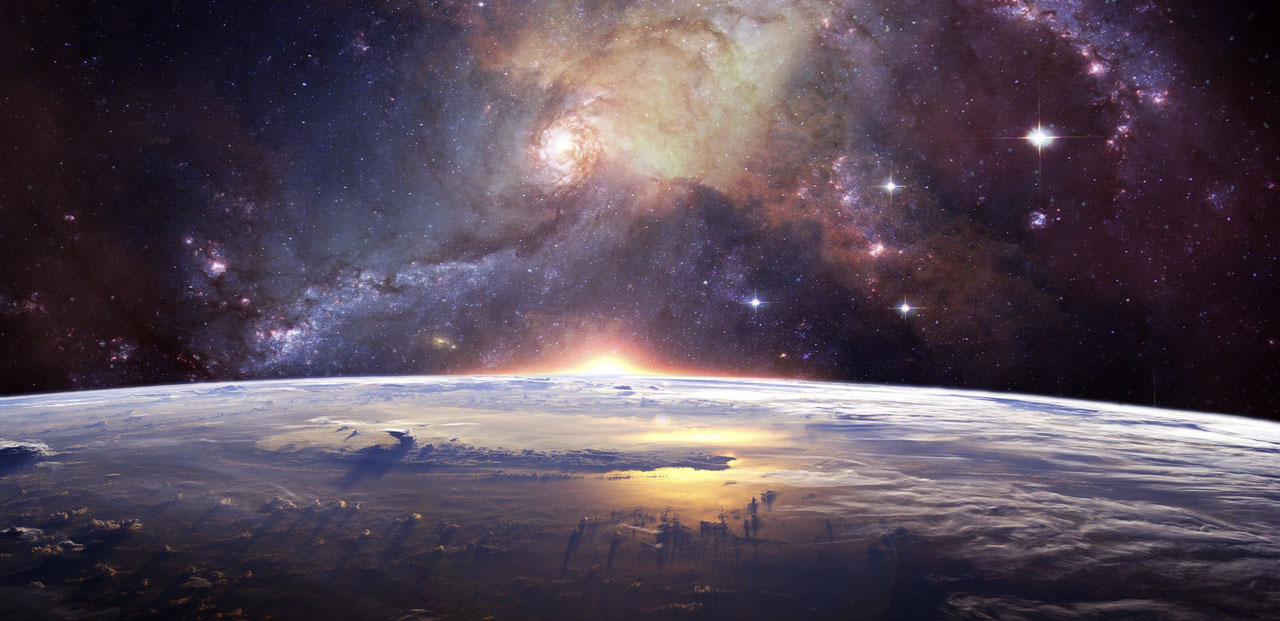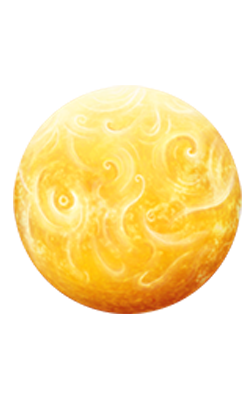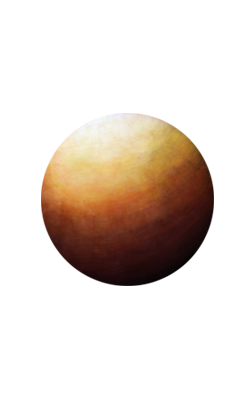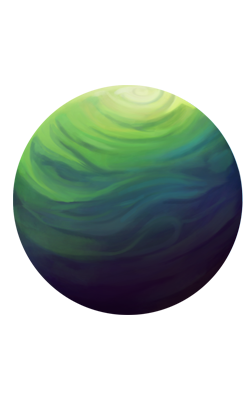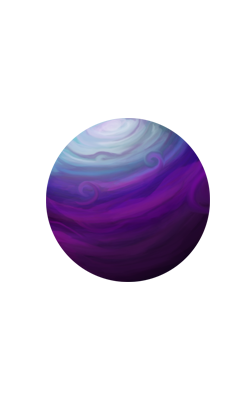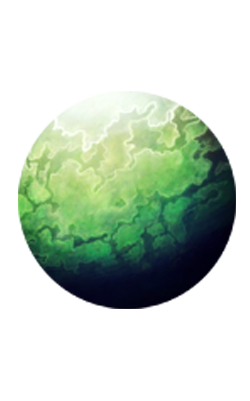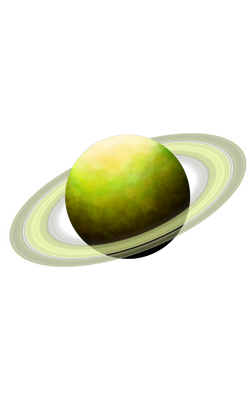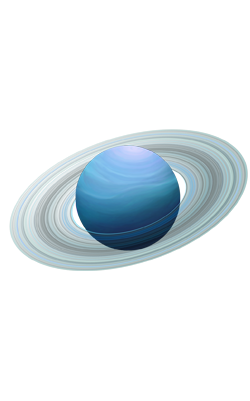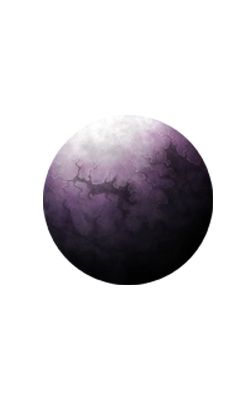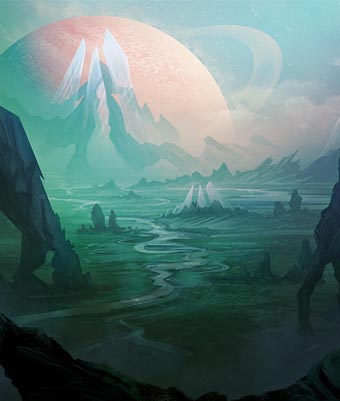Nothing comes close to awe-inspiring beauty and the wonder of creation than watching the planet of Balor rise on its bright moon of Titan.
Calera is the world at the centre of everything and the focus for these pages of lore. But beyond our world lies many more, and Calera sits in a system comprising of seven other planets and its host star, the Sun. These other worlds can be beautifully alien but some have more similarities than differences to Calera and its many environments. In the distant past, the solar system was explored, conquered and transformed by the previous races but any obvious attempts to reach into the Sea of Stars have long since disappeared.
In addition to the planets and numerous moons, the solar system is also home to a staggering number of asteroids, winding comets and other undocumented objects that orbit the Sun in regular and irregular orbits. Some of which are well known, at least in legend and myth, while others lie in the distant reaches, dark and forgotten.
Compared to even the largest planet in the solar system the sun is incomprehensibly massive and many times larger than the planet of Calera. Its size and mass alone keep every planet in the system in orbit around it and it played a critical role in the systems creations long ago as well. Most believe the sun to simply be a place of everlasting fire due to the vast amounts of heat and light that it brings to Calera every day, but the real truth seems to be far stranger. There is evidence to suggest that the sun is connected in some way to the magic from the sea of Stars. and may even be a conduit that allows magic to be drawn into the system in greater amounts.
This connection to magic means that the sun is not a lifeless mass as you might expect. The combination of energy and magic creates glimmering entities larger than mountains that swim through the suns firey wastes. These "creatures" can seemingly only survive within the sun and how they are created and what their purpose is has remained a mystery ever since their discovery.
Dust is an easy planet to spot, against the bright mass of the sun but it also reflects a considerable amount of light thanks to its stormy atmosphere and gleaming surface. In fact, despite the distances involved Dust can very easily be seen by the naked human eye on Calera. It was considered a particularly bright star for hundreds of years until its true nature was revealed in a few more enlightened areas of the world.
Dust was named by humans very recently and its true nature was guessed at with a certain degree of accuracy. It is the closest planet to orbit the sun, making it a very dry and hot world. The frequent storms caused by slight variations in solar activity throw reflective crystals and brilliant particles into the air, covering the entire planet in shard storms for weeks at a time. During this time light is more easily reflected back into space and the planet glitters and shines much like a star. When the storms clear and the surface can be observed clearly, massive shards and towering mountains of polished rock cover almost every inch of the planet. Deep crevices that cut down through the crust of the planet are also common and the entire world is rich in natural resources.
Most of the planets in the solar system have some kind of atmosphere and are therefore prone to strong winds and storms. However only on Auran is the wind a constant and terrifying force of nature that rips and tears across the surface, destroying everything in its path. But not only is the wind strong and fast, but the air is also thick with strange gases in much higher concentrations than found on Calera, often obscuring any sign of solid ground at all. Beneath the storms and winds, the surface is almost entirely barren, a windswept wasteland of bare rock and huge sand dunes.
The temperature is also ferociously hot across the entire planet but this has not prevented life from taking hold. A few resilient lifeforms can survive on the surface and use the constant winds almost like a current in an ocean, constantly bringing fresh food and resources.
Calera is the third planet orbiting the sun and is the central point for most of the Natural Historae described within these pages. Calera is a warm, wet, cold and dry planet that is almost perfectly balanced between the extremes. This steady balance most of the time has led to some of the most fascinating and incredible lifeforms to take root. Despite this balance, the planet can not be described as static and a great many chaotic elements continue to change and shape the surface. The present configuration of the continents and land masses, for example, are not a permanent fixture on the surface of the planet due to the large tectonic plates that make up the planet's crust.
Large sprawling oceans that span much of the planet are also one of Caleras most distinctive features. The early seas were a melting and mixing pot of chemicals, and elements necessary for early forms of life. There is also a huge variety of different biomes and environments beneath the seas, shallow coral reefs, kelp forests and vast plains of sediment. Which is mirrored in complexity and diversity on the land, with mountains, deserts, forests and bleak polar ice caps at the poles.
Calera is orbited by a single moon, called either Vesa or the Wanderer. Vesa’s orbit is seemingly erratic but closer study reveals a methodical pattern spread out across 127 years. Many of the other planets in the solar system are also orbited by multiple moons of their own but they are mostly barren and bleak lumps of rock. Vesa, however, is very different and the alien beauty of the moon was once one of the greater wonders of the system. Almost every aspect was crafted and shaped in ages past to meticulous detail, from the twisting mountains, purple forests and vivid seas to the lifeforms themselves that were designed or programmed to enhance the moons charm. Today the carefully constructed beauty is marred, broken and in dire need of repair and maintenance.
Life still thrives in certain places on Vesa but is incapable of surviving in others. The small size of the moon has meant that machinery and magic were necessary to keep many of the systems and environments running, from stopping the atmosphere from escaping into space to heating the surface. As they failed, life simply died out and this slow decay has bee taking place for countless years. While Vesa is still an awe-inspiring part of the solar system it is now a shell of its former glory.
In its current state, the planet of Zathor is an utterly alien planet, everything from its atmosphere, surface and lifeforms combine to make it a world thoroughly strange and utterly savage to anyone from Calera. There are few large bodies of water on the surface and instead a permanent thick mist blankets most of the world. Cold temperatures and massive pine like forests stretching across most of the planet, make Zathor similar in some ways to the boreal climates found on Calera. However, these similarities quickly begin to break down as you look closer at this cold hostile world.
Within the mists and freezing temperatures life on Zathor has evolved in a never-ending fight for survival, every scrap of sunlight, every water source and every inch of land is contested and fought over on a daily basis.
The Dead Planet.
An incredibly deep and vibrant ocean covers the entire planet of Balor. A place where seemingly permanent fixtures rarely stay the same for very long. Everything seems to shift and move and the shallow areas rise and fall as if the planet itself is breathing. Migrating lifeforms move from area to area in search of food and heat as the planet receives very little sunlight from the sun, existing in a deep twilight haze during the day or long dark night as the planet slowly rotates.
Most of the planet's heat comes from deep beneath the surface of the water, volcanoes and other hot sports constantly erupt beneath the seas and oceans and in the deepest parts of the water, the surface is a glowing red mix of liquid and solid ground.
At the very edges of the system, far beyond the warming light of the sun drifts the dark planet of Loern, also known as the quarantined planet. Very little can be said of this isolated and desolate world, not only due to the vast distances involved but also due to its disturbing reputation. No one wants to study Loern for very long and any that try quickly find themselves abandoning such projects, finding themselves being slowly driven to madness and confusion.
